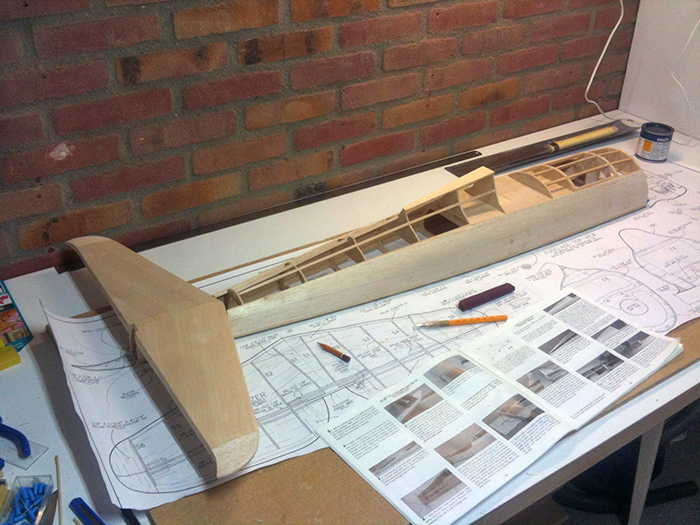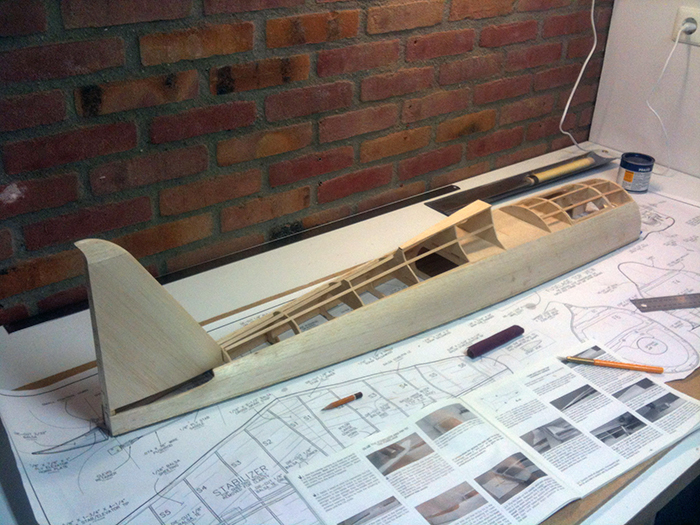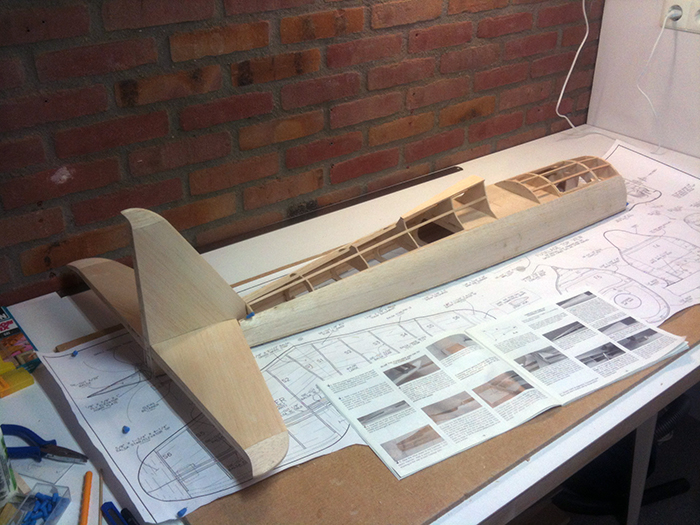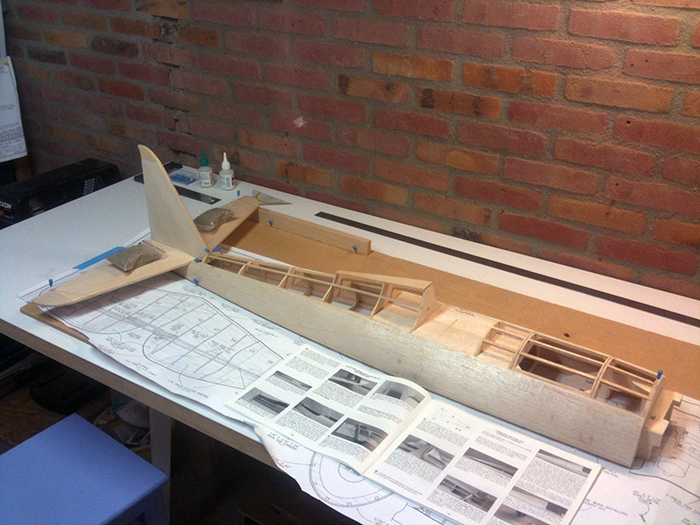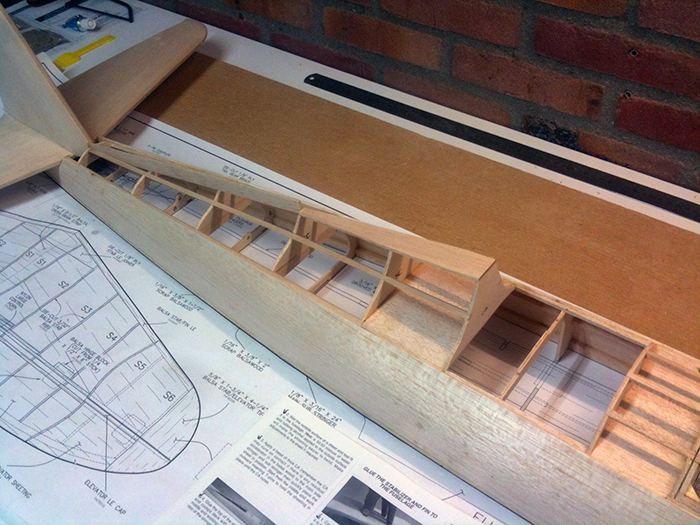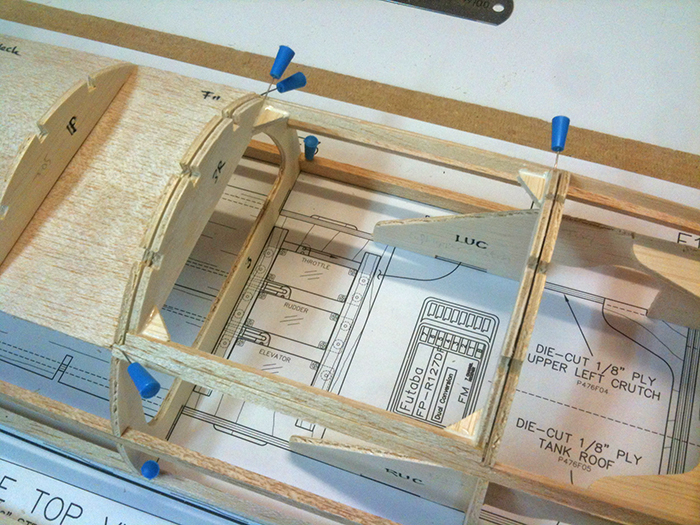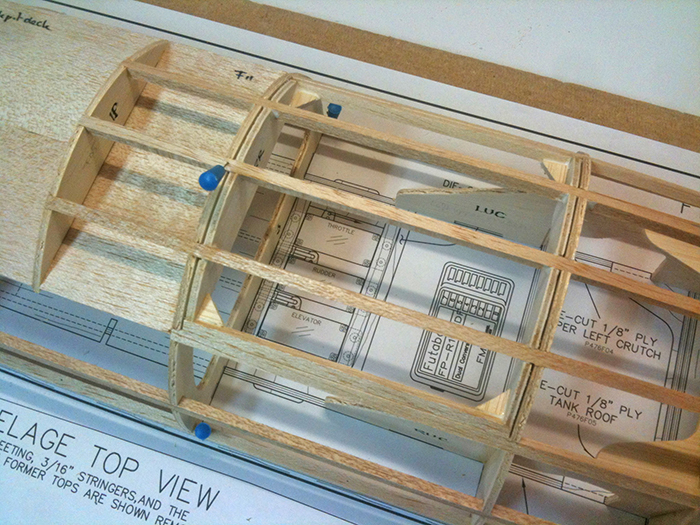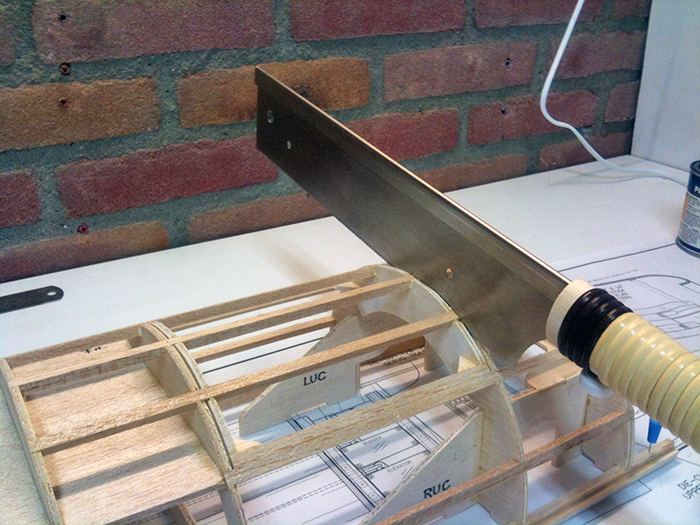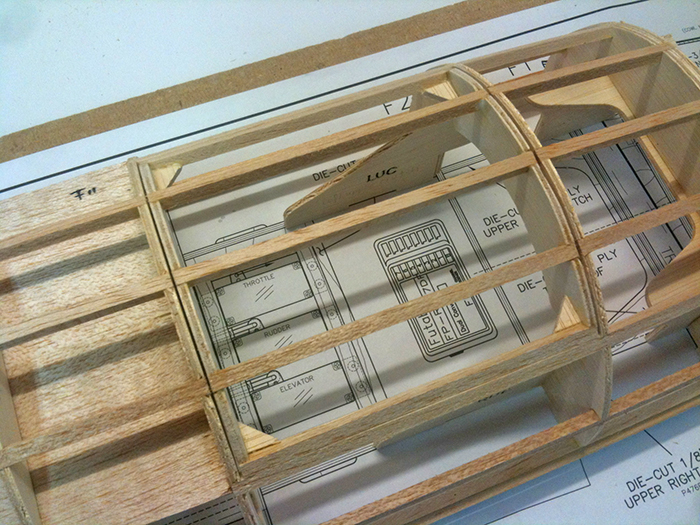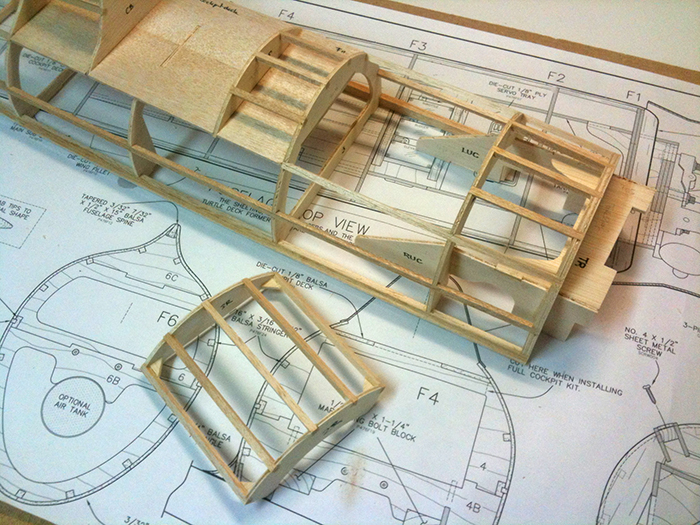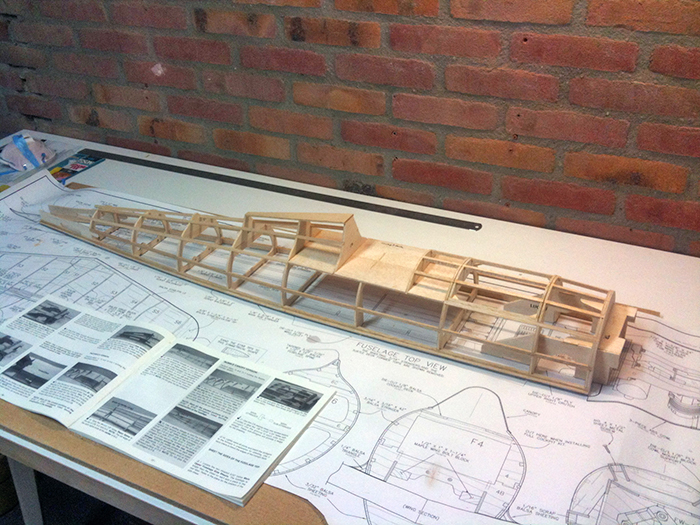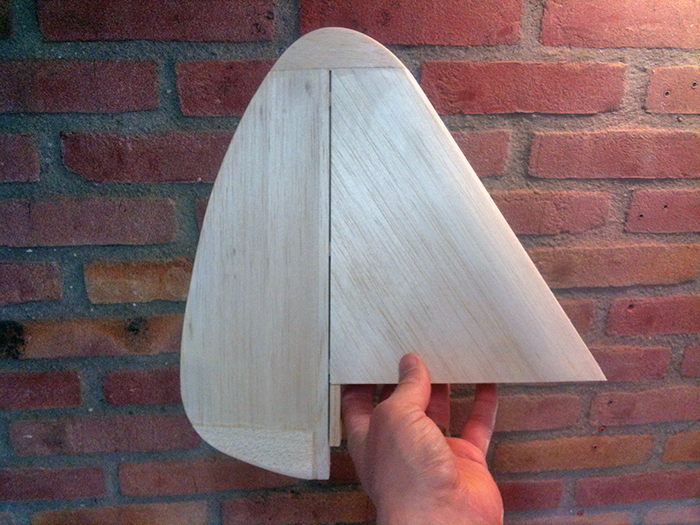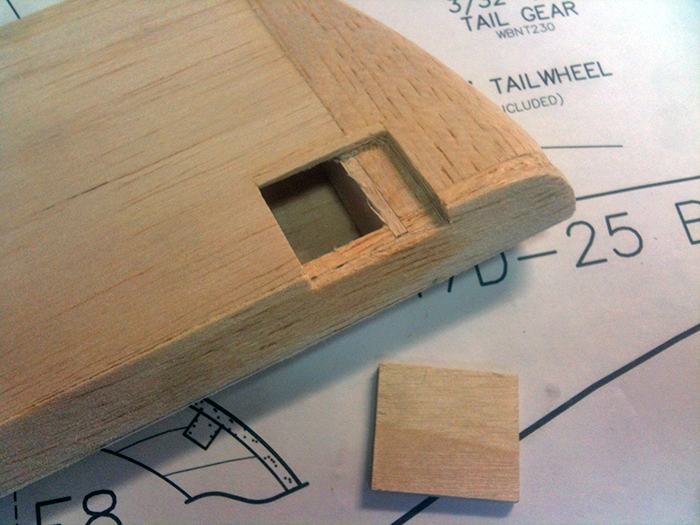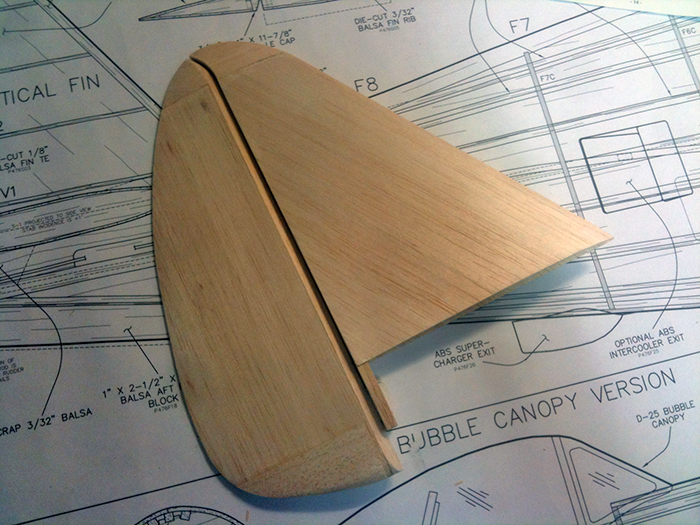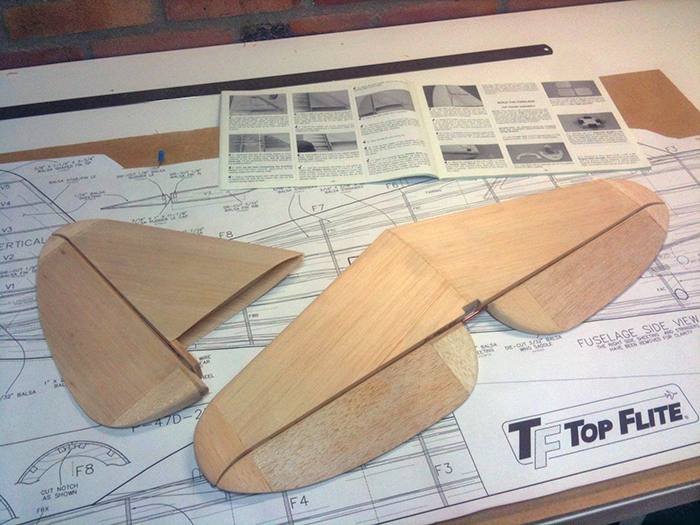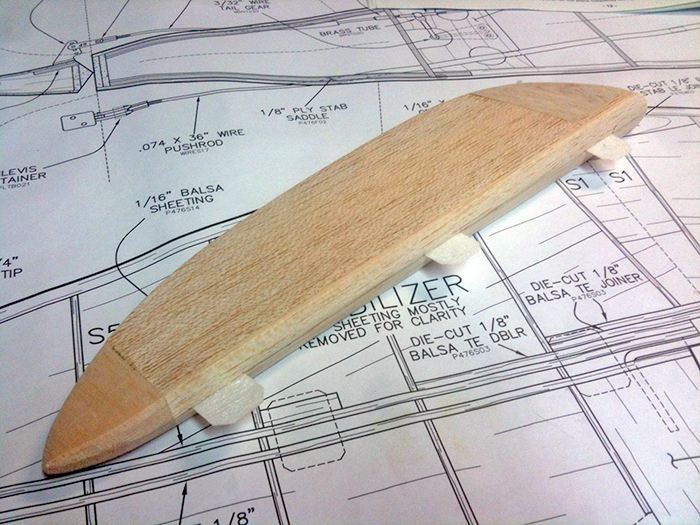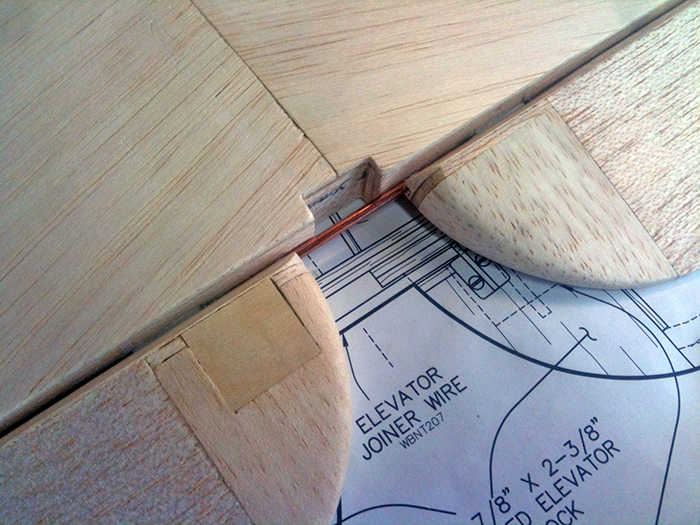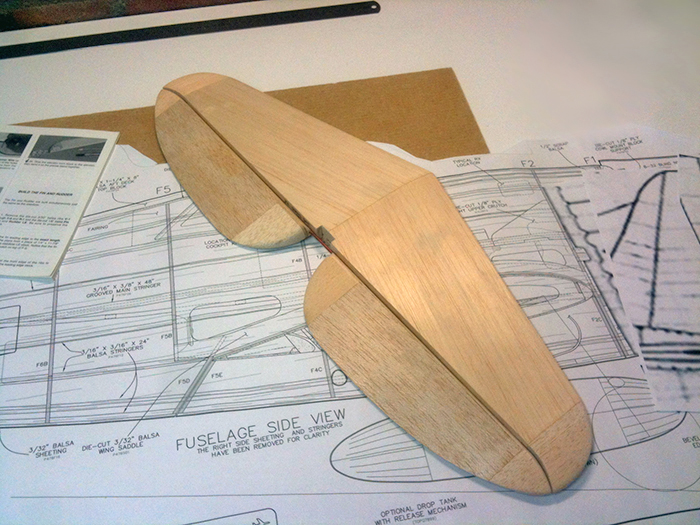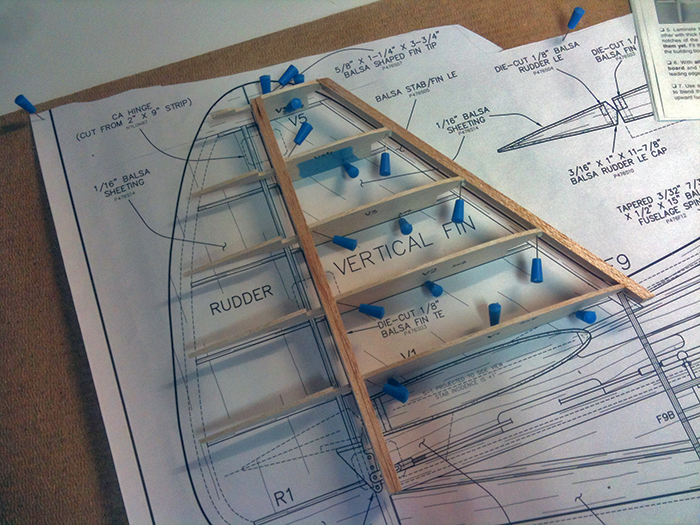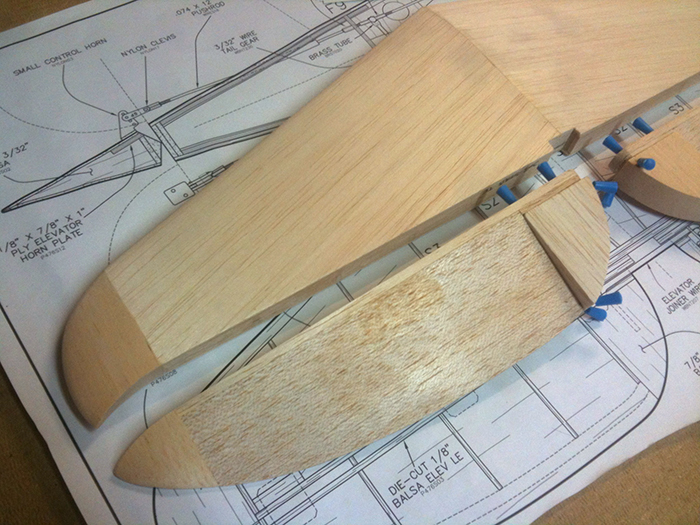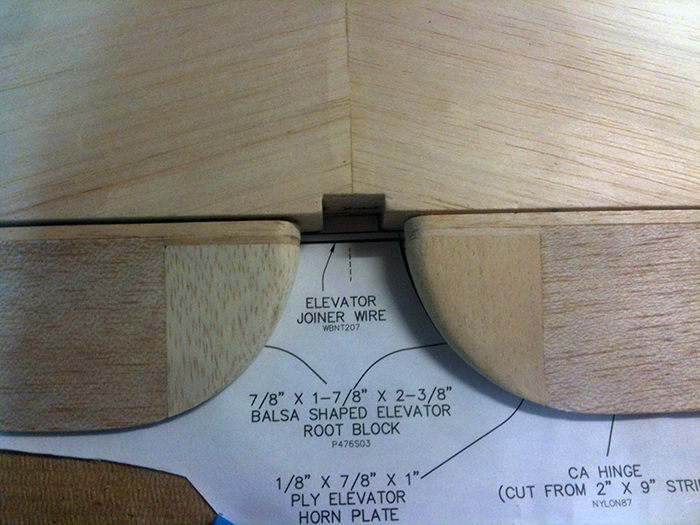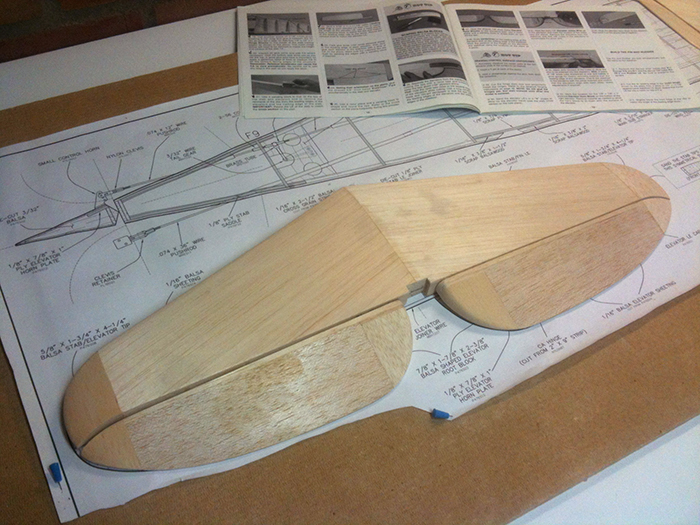I’ve spent the last few evenings fitting the tail. Not much to talk about, just a lot of measuring, checking alignment, adjusting the saddle and sheeting and such. When I was satisfied, I glued everything in place with 30 minute epoxy.
Fitting and aligning each of the tail feathers separately, then together:
When everything fitted well, I glued the tail in place. I used bags with wet sand as weights to keep the stab down and some wire (not really visible on the picture) to check the distance from the nose to both stab ends. Straightness of the fin was checked with a square:
And the result, looks pretty good!
Before I can continue sheeting the fuse top, I needed to cut away the cockpit deck for the full cockpit kit I’m going to install, and I needed to install the fuselage spine:

